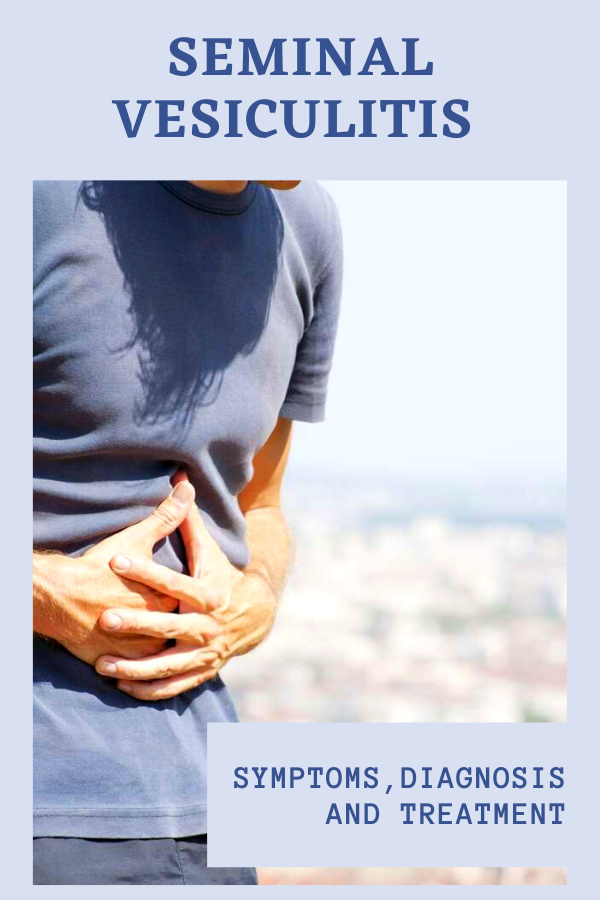
The seminal vesicle is a pair of small tubular glands, about 2 inches to 5 inches in length and is situated on each side of the urinary bladder near the prostate. Its main function is to secrete fluid contents to the ejaculatory ducts. This fluid contains nutrients such as the sugar fructose, proteins, citric acid, inorganic phosphorus, potassium, and prostaglandins.
An inflammation of the seminal vesicles is called seminal vesiculitis. Most often the condition is secondary to prostatitis but in some cases it occurs independently. Generally, there are two types of seminal vesiculitis, acute seminal vesiculitis and chronic seminal vesiculitis. Chronic vesiculitis occurs with greater frequency than acute seminal vesiculitis which occurs rapidly between 5 to 7 days. The condition may resolve or becomes chronic.
How do you identify seminal vesiculitis? Men who have seminal vesiculitis experience lower abdominal pain. Symptoms for acute vesiculitis is commonly felt in the perineum and groin area while chronic vesiculitis is usually felt in the upper pubis and in the perineum area as well. The symptoms are worsened after ejaculation.
Patients usually feel an urgent urination but are having difficulty of emptying the bladder. In addition to, a blood is obviously present in the semen. Other symptoms are associated with fever and chills.
The common causes of seminal vesiculitis are bacteria that penetrate in the seminal vesicles through the urethra, an inflammation of the testis or epididymis, infection of the prostate, bladder, and the rectum can directly affect the seminal vesicles, and any other infections such as tonsillitis and gingivitis may cause the spread of bacteria that travels the blood vessels.
A common Chinese herbal treatment is claimed to have a positive effect on seminal vesiculitis. Diuretic and Anti-inflammatory Pill, developed by Wuhan Dr. Lee’s clinic promotes blood circulation by eliminating blood stasis, induce diuresis, and adds in stasis and treat the condition for a range of time. People usually prefer the traditional treatment because it does not lead to health complications even with a prolonged use.
Aside from traditional Chinese Medicines, antibiotics are commonly prescribed and may last in longer duration. It is best to consult your doctor if you have any symptoms of seminal vesiculitis since a prolonged use of medications may have an adverse effect on your health.
Taking a rest by lying down can help keep the unobstructed bowel movement. Maintaining a healthy diet can greatly help in preventing and treating the condition. Including fruits and vegetables in your daily meal and avoiding excessive alcohol consumption helps to eliminate the condition.
Men with lower abdominal pain should always seek a doctor’s advice. Doctors are much capable of diagnosing and treating the condition than self-diagnosis.
Enjoyed Seminal Vesiculitis – Symptoms, Diagnosis and Treatment? Share it with your friends so they too can follow the Superfoodsliving journey.
Share on Pinterest
